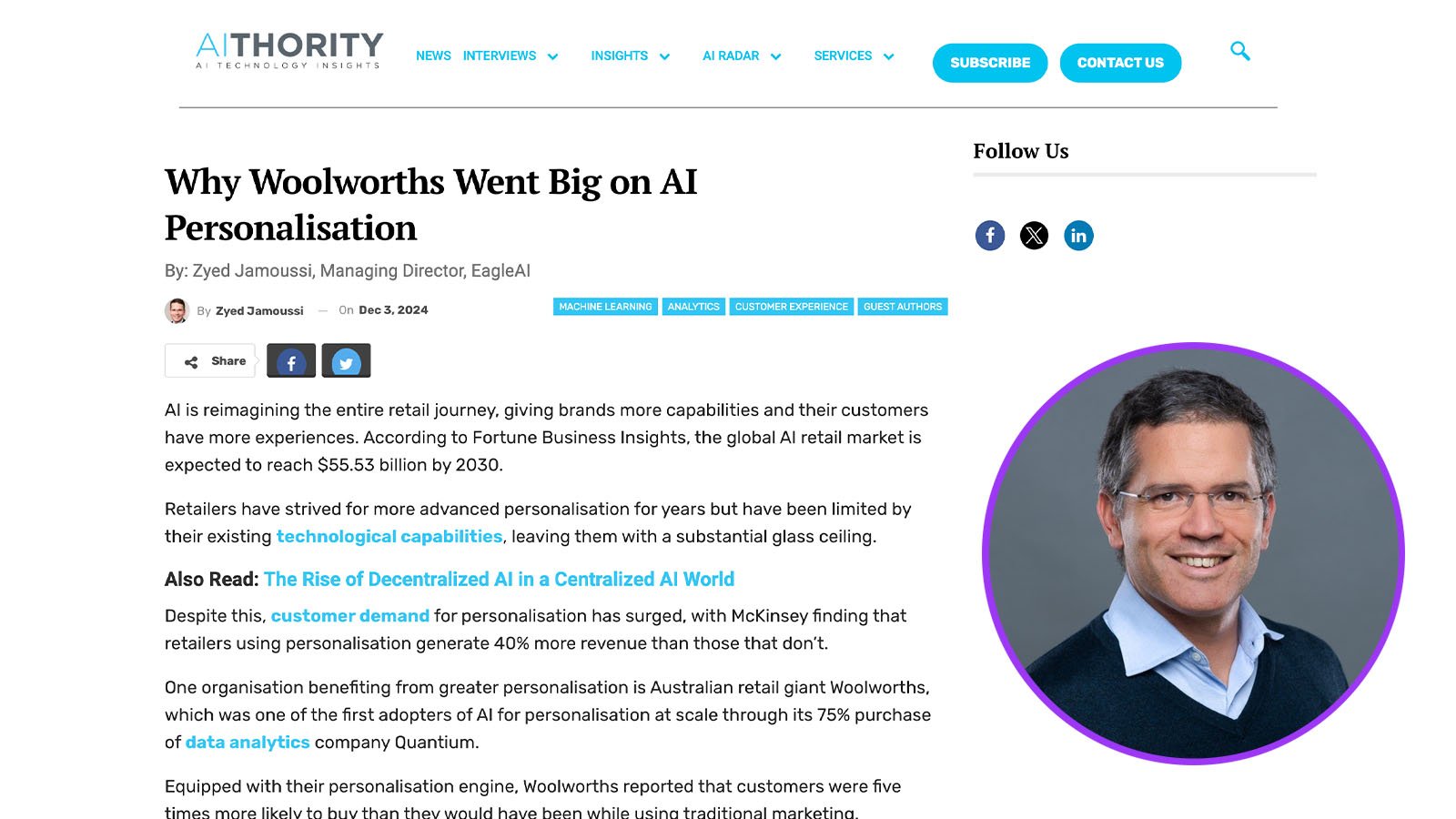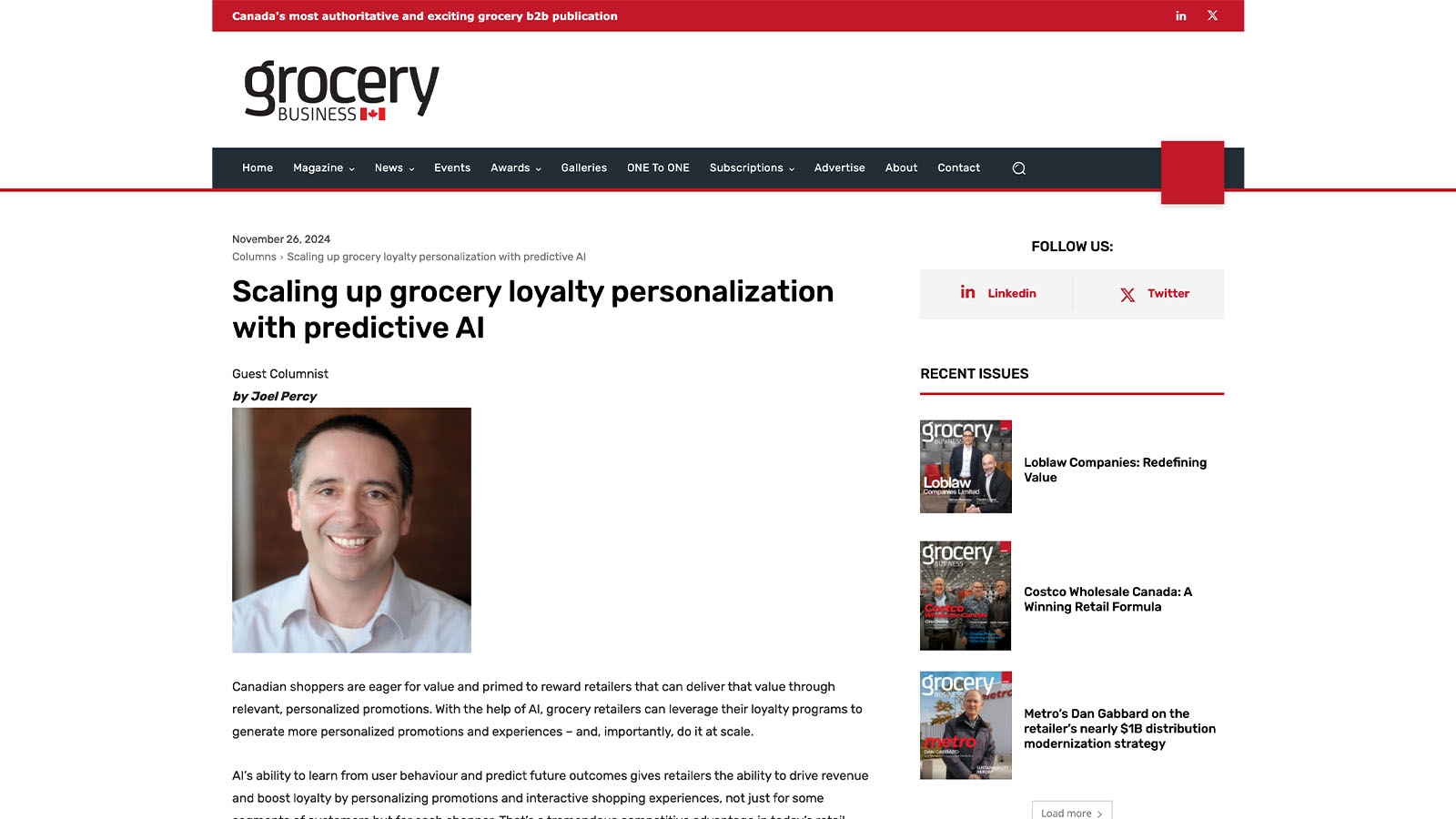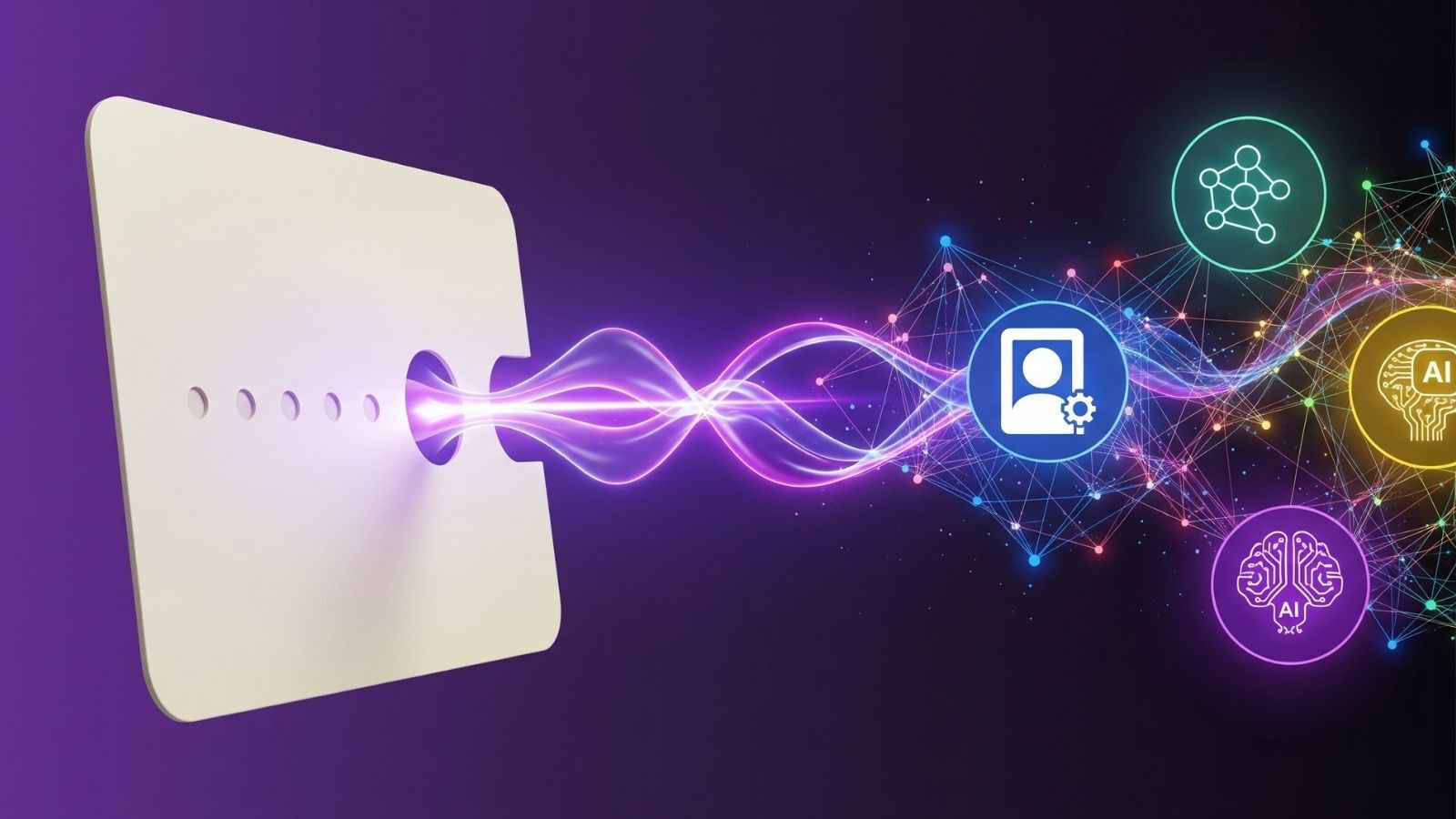1 min read
Inside Woolworths' AI Personalization Strategy for Retail Growth
Discover how Woolworths is using predictive AI to enhance personalization, improve customer loyalty, and drive growth across its retail operations.
Get the latest insights, research and news delivered straight to your inbox.
Plus, enter to win the 2nd edition of Omnichannel Retail by Tim Mason & Sarah Jarvis!
No spam. We promise. 💜
Featured Case Study:
See how Eagle Eye helped Giant Eagle relaunch myPerks, delivering 25M+ personalized offers monthly and boosting loyalty program ROI.
Contact us to find out how we can enable your teams on our platform.

5 min read
 Jean-Matthieu Schertzer
on
13 March, 2024
Jean-Matthieu Schertzer
on
13 March, 2024

Artificial intelligence (AI) is reimagining the entire retail journey, giving brands more capabilities and their customers more experiences. According to Fortune Business Insights, the global AI retail market is expected to reach $55.53 billion by 2030.
Based on current trends (and retailers' investments), AI is well-positioned to be the primary driving force behind the retail marketing campaigns of tomorrow. That’s not to say there won’t be challenges, including retailers’ ability to acquire high-quality data in large quantities, achieving seamless integration, and long-term optimization.
Today, we examine three ways retailers can apply AI to their marketing processes to generate more customer loyalty and greater overall spending.
Retailers have strived for more advanced personalization for years but have been limited by their existing technological capabilities, leaving them with a substantial glass ceiling. Despite this, customer demand for personalization has surged, with McKinsey finding that retailers using personalization generate 40% more revenue than those that don't.
Implementing personalization initiatives is one thing. Doing it at the scale required to impact both revenue and the broader customer experience is quite another. With the rise of AI-based solutions, retailers find themselves with the tools to shatter the glass ceiling and provide offers to customers on a deeper level than ever before.
This extends to using AI to automate the creation of offers in real-time to target customers on an individual level.
Our CEO, Tim Mason, outlined a key example of how these capabilities can be put into practice in the recently released 2nd edition of Omnichannel Retail 2.0: How to Build Winning Stores in a Digital World, the experience of Australian retail giant Woolworths. Woolworths was one of the first adopters of AI for personalization at scale through its 75% purchase of data analytics company Quantium. Equipped with their personalization engine, Woolworths reported that customers were five times likelier to purchase than they would have been while using traditional marketing.
The supermarket giant has also significantly boosted its loyalty efforts by introducing its real-time loyalty program, powered by Eagle Eye. By connecting in-store point-of-sale systems with the loyalty program in real-time, consumers can track, earn, and redeem their points as they shop. As Woolworths CEO Brad Banducci said in a recent earnings call, "Our real-time loyalty platform is a re-platforming of our loyalty business that has taken us close to 3.5 years to go from a legacy system that had a number of constraints in what we could do for our members, to a system that is real-time. It's Eagle Eye, for those interested in the tech behind it. And it can be instantaneous. It can reconcile full history. And it's not constrained in terms of the offers we can provide, or how we can repurpose it, so we have an incredibly powerful platform."
Another example of AI-powered personalization is Starbucks. As early as 2016, the multinational coffee chain integrated big data, machine learning, and AI across its existing channels to produce highly personalized offers using millions of data points, including in-store interactions, mobile app interactions, individual preferences, and purchase history.
This has enabled Starbucks to deliver hyper-personalized offers to new and existing customers. The premier roaster and retailer of specialty coffee has also ramped up its Starbucks Rewards program to deliver more value by giving customers the right offers at the right time in the right place.
For example, during a heatwave in Memphis, Tennessee, Starbucks launched a localized "beat the heat" promotion. Despite having 87,000 different beverage combinations, they could efficiently process every single order, deliver personalized offers, and create a symbiotic circle by gathering even more data to optimize its future customer experiences.
But personalization at scale is more than just building the infrastructure to create and process endless offers in real-time. It's also about getting better at giving customers what they want before they even think about what they need.
Loyalty is at the heart of any successful business. According to the principles of the 80/20 Rule, 80% of sales will be generated by 20% of customers. While saving money is important for consumers, engagement and user experience help loyalty programs stand out.
Non-offer content is central to winning the engagement and experience battle, hence why gamification has become central to many retailers' loyalty programs. One study found that over 60% of customers who interacted with gamified elements went on to make a purchase. It's just one example of how content other than explicit promotions or discounts can drive purchase volume.
Our recent study, Grocery's Great Loyalty Opportunity, found that 66% of consumers would play games, enter contests, and complete challenges via a loyalty program. This level of engagement is essentially non-offer-based content that deepens the connection between customer and retailer.
For example, UK retailer Asda launched its Asda Rewards scheme under "Pounds Not Points" in 2022. Customers could save and engage in games, challenges, and other activities to generate cash within its app. So far, five million customers are using the app at least once per month.
Alongside targeting consumers looking to save on their shopping, Asda uses data from these interactions to engage across its other channels. Additionally, using AI solutions to process the data it held from its Asda Rewards scheme, the supermarket giant experienced a 179% increase in direct engagement rates via its email newsletter.
Other forms of non-offer content may include guides, helpful articles, and tailored brand news. These can be customized using the same data points used to produce hyper-personalized offers and developed and deployed quickly using generative AI; all of this enables retailers to leverage the same AI tools to build loyalty while personalizing the consumer experience through every channel.
Every customer interaction, whether through loyalty programs, gamification, online shopping habits, or in-store behavior, is an opportunity to learn and create more compelling and successful campaigns.
Retailers use A/B testing to determine what works best to take full advantage of that. A/B testing is central to achieving the right messaging, offers, and changes. Giving customers what they want is pivotal to a retailer’s success, but determining what that is has always been a retailer’s biggest challenge.
Traditionally, learning from interactions took months and potentially years in larger companies. But AI can be used to accelerate this process rapidly.
Rather than creating new touchpoints for additional data, AI can empower traditional retailer touchpoints to provide vital information on bolstering the customer experience. In other words, AI squeezes more intelligence out of point-of-sale systems and existing mobile apps.
AI can help analyze everything from purchases, browsing time, scrolling, likes/dislikes, and used offers, giving retailers more real-time metrics than ever. What’s critical to note here is that AI does not change the principle of learning and acting on previous customer interactions. Instead, it accelerates and amplifies the process, giving retailers better results, thus reducing the likelihood of failed campaigns and the losses associated with them.
Crucially, transitioning from the binary to a more nuanced understanding of everything from offers and engagement to communications has enabled brands to treat every customer as an individual, not a segment. The challenge, however, will lie in change management. In other words, retailers must shift from traditional analytical methods and overcome existing legacy infrastructures. How retailers approach this issue will influence how smooth the transition is for them.
These examples of applied AI primarily come from the early adopters in the retail industry. They’re still not widely implemented throughout the sector, but this is quickly changing. According to a new survey, 56% of retail executives will invest in AI tools for their retail marketing efforts in 2024.
Despite the initial impressive results from retail AI solutions, barriers still need to be overcome, including the ability to integrate, scale, and customize. As AI solutions advance, many experts don’t just anticipate their power and capabilities to increase but also the ease of installation and personalization.
In the meantime, many retailers will be focused on getting over the buzz-driven phase of AI and into the practical solutions that give them the real-world revenue bumps they expect.
Get the latest insights, research, and news delivered straight to your inbox.
Plus, enter to win the 2nd edition of Omnichannel Retail by Tim Mason & Sarah Jarvis!
No spam. We promise. 💜

1 min read
Discover how Woolworths is using predictive AI to enhance personalization, improve customer loyalty, and drive growth across its retail operations.

1 min read
Joel Percy shares how predictive AI is transforming loyalty in grocery, enabling retailers to scale personalization and improve customer experiences.

3 min read
Discover how leading retailers use AI and data to transform loyalty programs into personalized, value-driven customer experiences.